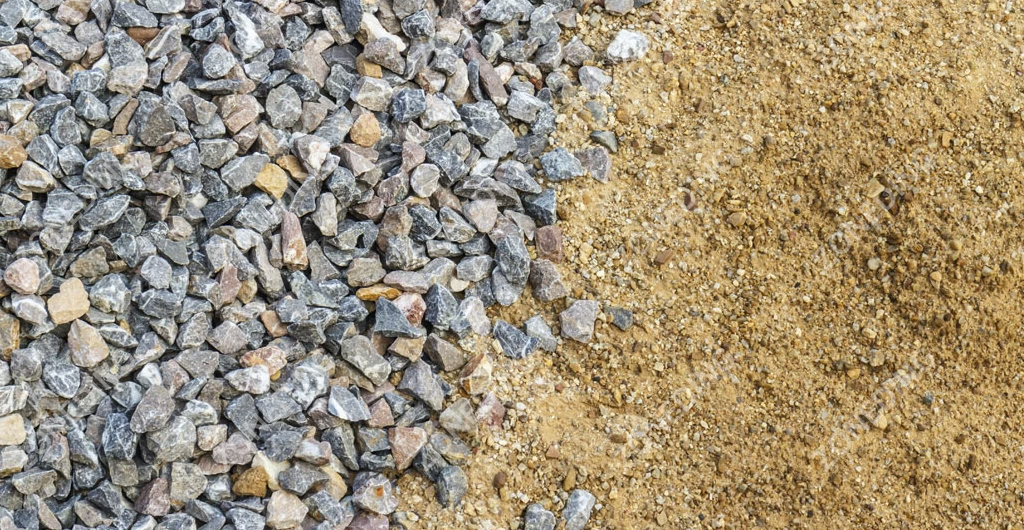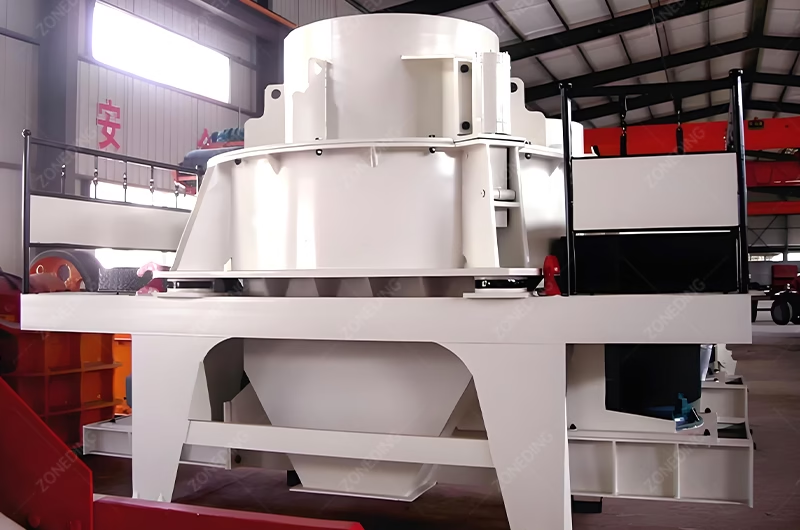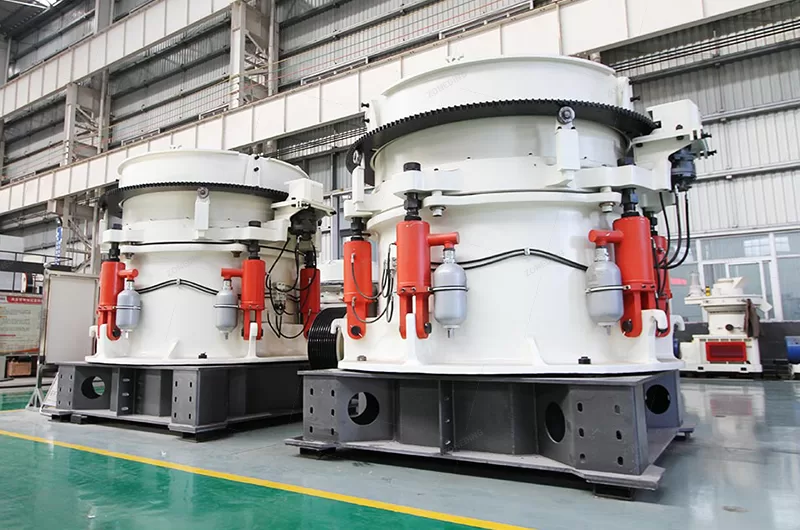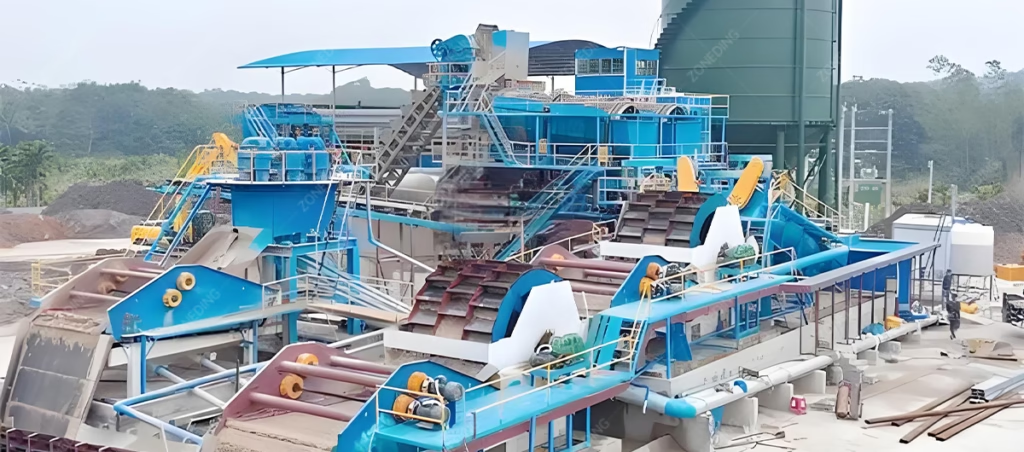全站搜索
Search the entire website
Search the entire website
Stone crusher operation forms a fundamental process in modern construction and infrastructure development. The conversion of large rocks into high-quality, uniform sand represents a complex yet crucial task. This guide offers an in-depth look at how stone crushers operate to achieve optimal sand production. It covers essential aspects from plant setup and material flow to advanced control strategies. ZONEDING MACHINE, a leading manufacturer of mineral processing equipment, provides robust and efficient solutions for every stage of this aggregate production process. The company’s expertise ensures effective rock crushing into sand. This meets the stringent demands of various industries.
The demand for high-quality sand continues to rise globally. Natural river sand, once the primary source, faces depletion and environmental regulations. This necessitates manufacturing sand through efficient stone crusher operation. Manufacturing sand from rock offers a sustainable alternative, providing an abundant supply of a critical construction material. The controlled process also allows for specific particle size distribution and superior angularity. This enhances concrete strength and asphalt stability.

The shift toward manufactured sand is not merely an environmental imperative. It represents a technological advancement that offers superior product characteristics. Natural sand often contains impurities and has a smooth, rounded shape. Manufactured sand, however, produced through precise stone crushing techniques, exhibits a rough, angular texture. This texture promotes better interlocking in concrete mixes. This leads to improved strength and reduced cement consumption.
ZONEDING supplies crushing equipment specifically designed to meet these quality requirements. This ensures optimal sand production that rivals or even surpasses natural sand in many applications.
Worldwide, urban development and infrastructure projects consume vast quantities of sand. This substance forms the backbone of concrete, mortar, and asphalt. Environmental concerns and regulatory restrictions increasingly limit natural sand extraction from rivers and beaches. This creates a supply gap that manufactured sand aims to fill. Manufacturers produce sand from coarser aggregates, ensuring a consistent supply.
Manufactured sand offers several key technical advantages over natural sand. Its angular and cubical particle shape significantly improves the workability and strength of concrete mixes. This leads to higher-quality construction. The stone crusher operation allows precise control over the grading and fineness of the sand. This ensures consistent product quality batch after batch. This consistency is difficult to achieve with natural sand. It enhances the reliability of construction materials.
Choosing appropriate stone crushers is paramount for successful crushing rock into sand. Not all crushing equipment produces fine, uniform sand. Selection depends on the raw material’s properties and the desired fineness and shape of the sand. Vertical Shaft Impact (VSI) crushers are particularly favored for sand making due to their unique crushing action.

The objective is to achieve a consistent particle size distribution and a cubical particle shape. This ensures sand meets industry standards for diverse applications like concrete, mortar, and aggregate bases. A carefully selected crusher system from ZONEDING, incorporating advanced mineral processing equipment, optimizes the efficiency and quality of the sand production process. The right selection helps maximize profitability in any aggregate production plant.
VSI crushers are the most commonly used machines in the sand production process. They employ a rock-on-rock or rock-on-metal crushing method. Material enters a high-speed rotor; then it hurls against a stationary anvil or other rock particles. This impact and attrition reduce rocks into fine, cubical sand. ZONEDING’s VSI crushers design for high throughput and consistent sand quality. This makes them essential for optimal sand production.
While VSI crushers excel at tertiary crushing for sand making, cone crushers also play a crucial role. Operators often use them in secondary or tertiary stages. This is especially true when processing harder rocks. They provide excellent shape correction and fine size reduction. Modern cone crushers from ZONEDING feature hydraulic adjustments. This allows precise control over output size and enhances the overall efficiency of the crushing rock into sand process.
Impact crushers, particularly horizontal shaft impact (HSI) models, also contribute to sand production. While not primarily sand makers, they produce a cubical product. They operate effectively with softer to medium-hard rocks. Their use often complements VSI crushers or cone crushers in a multi-stage stone crusher operation. ZONEDING’s impact crushers are known for their robust design. They produce aggregates with good particle shape.



The journey from extracting raw rock to producing uniform sand involves multiple stages and careful crushing plant setup. A well-planned stone crusher operation layout optimizes efficiency, minimizes transportation costs, and ensures a smooth material flow. This systematic process begins at the quarry face. It continues until operators stockpile the final sand product.

Initial design considerations for a sand production process include the type of raw material, desired output capacity, and site geography. ZONEDING provides comprehensive complete production line solutions tailored to these specific needs. This involves designing the layout for primary crushing, screening, subsequent crushing stages, and final product handling. A meticulous setup ensures that large rocks efficiently prepare for the sand-making process.
Raw material, typically large boulders from the quarry, first enters a primary jaw crusher via a hopper and vibrating feeder. The primary crusher reduces the rock to a more manageable size. This begins the stone crusher operation. Size reduction prepares the material for subsequent stages. This minimizes damage to finer crushing equipment. ZONEDING’s robust jaw crushers engineer to handle the toughest materials, ensuring effective initial size reduction.
After primary crushing, operators often convey the material to a pre-screen. This removes fines and contaminants before further crushing. Efficient pre-screening increases the capacity of downstream stone crushers. It also reduces wear on critical components. Operators then temporarily store clean material in buffer hoppers. This ensures continuous and even feed to the secondary stone crushers. This smooth flow proves vital for maintaining optimal sand production. ZONEDING manufactures reliable screening equipment that optimizes pre-screening efficiency.
The core of the stone crusher operation for sand production lies in the secondary and tertiary crushing stages. These stages meticulously reduce the material to the required fine sand particles. This process demands precision in crusher selection and setting. This ensures both efficient size reduction and the desired cubical particle shape.

Optimal sand production requires careful orchestration of these stages. It primarily leverages the unique capabilities of VSI crushers. Their ability to produce fine, cubical material makes them indispensable. Operators monitor and adjust the entire system to maintain consistent output quality and maximize throughput. ZONEDING offers advanced crushing equipment with automation features. These features allow operators to fine-tune operations for superior sand quality and efficiency.
After primary crushing, the material undergoes secondary crushing. This typically uses a cone crusher designed for medium-hard to hard rocks. This stage significantly reduces particle size further and begins the process of shape correction. For crushing rock into sand, the tertiary stage proves critical. Here, operators predominantly use VSI crushers. They provide the high-impact energy necessary to create fine, cubical sand particles from the feed material. This multi-stage approach ensures efficient size reduction. It also optimizes the final product’s physical characteristics.
Achieving high-quality uniform sand requires continuous monitoring and adjustment of stone crusher parameters. This includes rotor speed for VSI crushers, closed-side settings (CSS) for cone crushers, and the type of wear parts used. Higher rotor speeds in VSI units generally produce finer sand and more cubical particles. Adjusting CSS in cone crushers changes the output size. Regular calibration ensures the sand production process consistently delivers product meeting specified grading curves and shape requirements.
Once the crushing rock into sand process completes, the raw manufactured sand requires further refinement. This involves classification through screening and, often, washing. These steps are crucial for removing oversized particles, unwanted fines (dust), and impurities. The goal is to produce high-quality, uniform sand that meets stringent construction standards and customer specifications.

The efficiency of both screening and washing directly impacts the final sand’s market value and usability. Poor classification can lead to inconsistent sand. Inadequate washing leaves harmful impurities. ZONEDING provides integrated screening and washing equipment solutions. These ensure optimal refinement. This helps deliver a premium sand product ready for use in critical applications.
After tertiary crushing, the sand-sized material passes through advanced screening equipment. Multi-deck vibrating screens with specific mesh sizes separate the sand into different fractions. This classifies it according to desired particle size distribution. Operators typically recirculate oversized particles back to the VSI or cone crusher for further reduction. Precision screening is vital for achieving uniform sand that meets specific technical requirements for concrete, mortar, or asphalt mixes.
For many applications, especially in high-strength concrete, manufactured sand requires washing. This removes ultrafine particles (silt and clay) and any remaining dust. These impurities negatively impact concrete quality. Sand washing equipment, such as spiral classifiers or bucket wheels, effectively cleans the sand. The washing process improves the sand’s fineness modulus, reduces its water absorption, and ultimately enhances the quality of the final construction material.
Modern stone crusher operation plants for sand production rely heavily on sophisticated control strategies. These strategies aim to optimize every stage, from material feeding to final product quality. Effective control maximizes throughput, minimizes energy consumption, reduces wear on stone crushers, and ensures consistent uniform sand output. Simply operating machines is insufficient; precise management coordinates the entire aggregate production workflow.
The integration of automation and real-time monitoring systems allows for dynamic adjustments to plant parameters. This responds to changes in raw material characteristics or desired product specifications. ZONEDING champions these advancements. The company’s mineral processing equipment integrates seamlessly with advanced control systems. This delivers truly optimal sand production.
Advanced automation systems play a critical role in modern sand production process. Sensors monitor feed rates, crusher motor loads, and final product grading. Programmable Logic Controllers (PLCs) adjust feeder speeds, crusher settings, and conveyor rates automatically. This maintains peak performance and ensures crushing rock into sand efficiency. Real-time monitoring provides operators with immediate feedback. This allows for quick intervention and adjustments. This is essential for consistent uniform sand quality.
Energy consumption represents a significant operating cost in stone crusher operation. Effective control strategies include optimizing crusher settings to reduce power draw, ensuring that motors operate at optimal loads, and implementing soft starters to minimize energy spikes. Regular maintenance and the use of energy-efficient crushing equipment from ZONEDING also contribute to lowering energy consumption per ton of sand produced. These efforts lead to substantial cost savings and contribute to more sustainable aggregate production.
Selecting the right stone crusher supplier critically influences the success of a sand production process. A reputable supplier offers more than just machines; they provide expertise, comprehensive support, and a partnership to overcome challenges and achieve production goals. For any quarry operation focused on crushing rock into sand, a reliable partner like ZONEDING ensures long-term operational efficiency and profitability.
The ideal supplier offers a complete range of mineral processing equipment. Operators integrate this into a seamless complete production line. This ensures compatibility and optimized performance. The supplier’s commitment to after-sales service, including installation, training, and spare parts availability, is also paramount. This maximizes uptime and minimizes operational disruptions.
The stone crusher operation to convert rock into high-quality sand represents a sophisticated process. It requires careful planning, the right quarry machinery, and meticulous execution. From understanding the growing demand for manufactured sand to implementing advanced crushing, screening, and washing techniques, each stage plays a vital role. This helps achieve optimal sand production. Effective control strategies for material flow, power consumption, and quality ensure a profitable and sustainable aggregate production venture.
Ready to achieve optimal sand production with efficient stone crusher operations? Contact ZONEDING today for expert advice and a customized equipment solution!
The crushing process is the heart of turning large, unusable rock into valuable, specific-sized products like sand and gravel. The goal of any rock crushing plant is to reduce the size of raw material through a series of stages to produce aggrega...
View detailsBefore you can build a profitable mineral processing plant, you need a blueprint. Mineral beneficiation tests provide that essential blueprint for your ore. My company, ZONEDING, has designed and built complete mineral processing plants since 19...
View detailsChoosing the right impact crusher for your operation is a critical decision that affects your product quality, operational costs, and overall profitability. The two main types, the Horizontal Shaft Impactor (HSI) and the Vertical Shaft Impactor...
View detailsAre you trying to decide between a crusher and a feeder breaker for your operation? You are not alone. This choice is fundamental to your site's productivity and profitability. The core difference is simple: crushers are designed to break hard, a...
View details